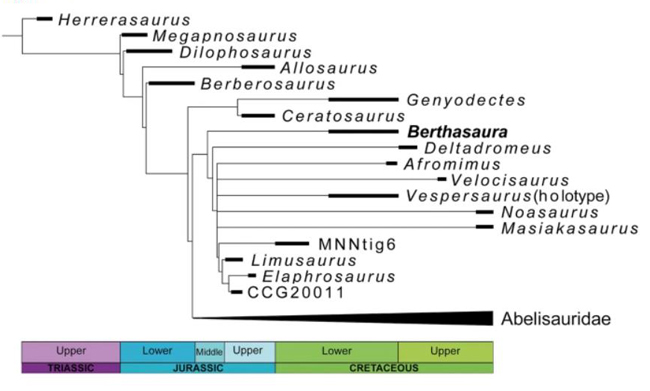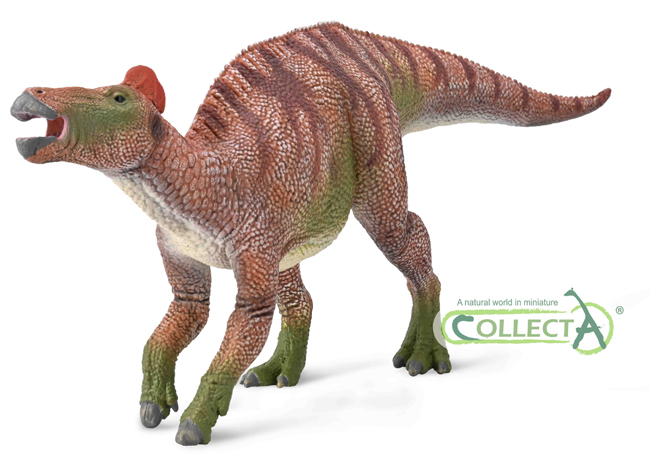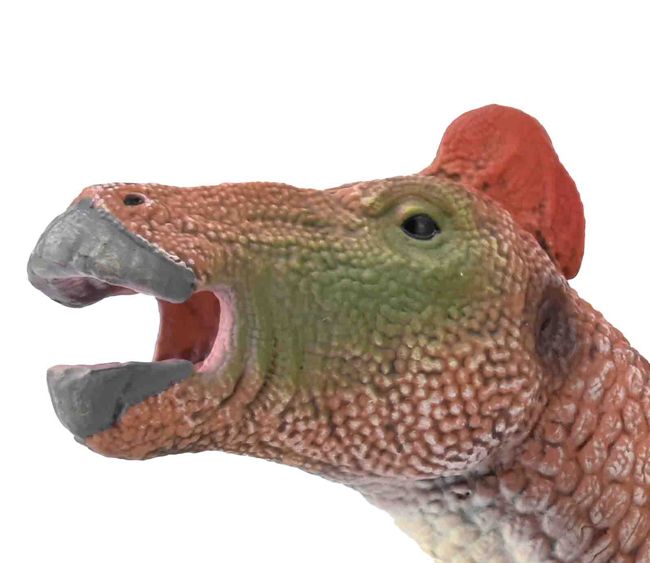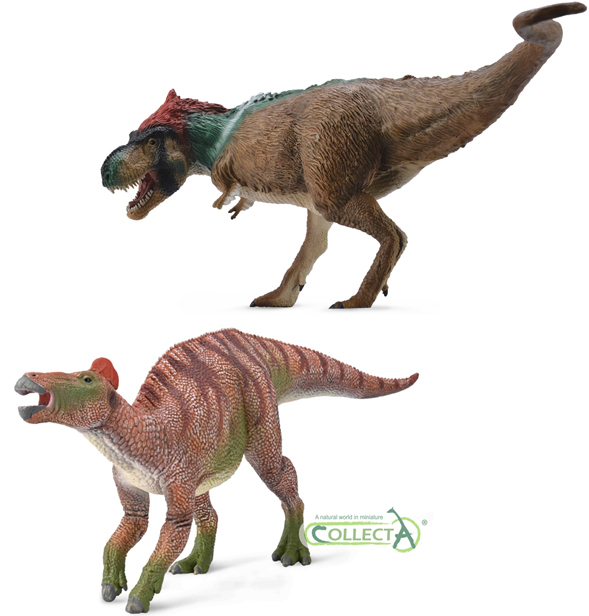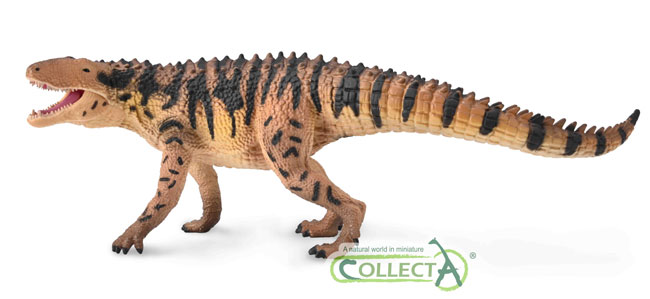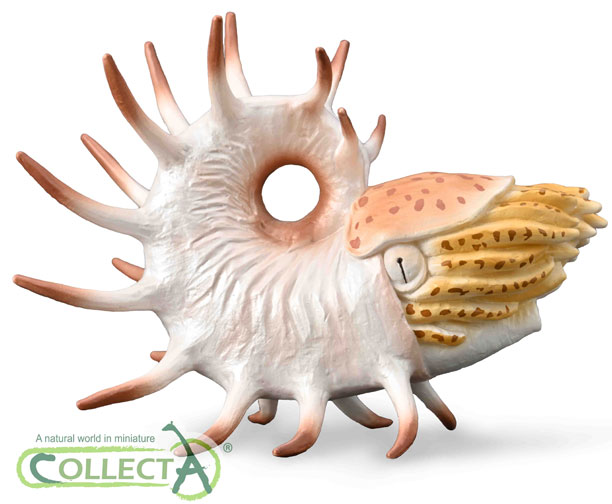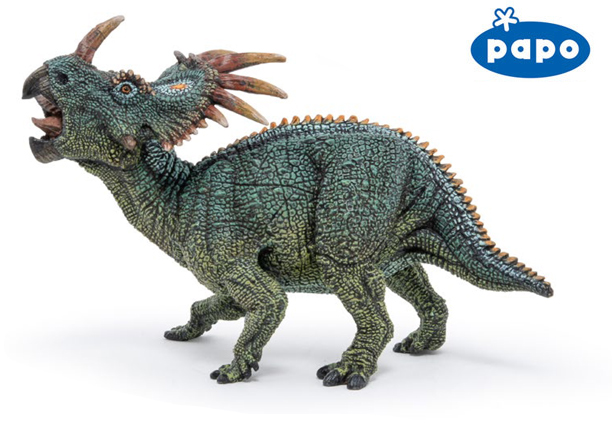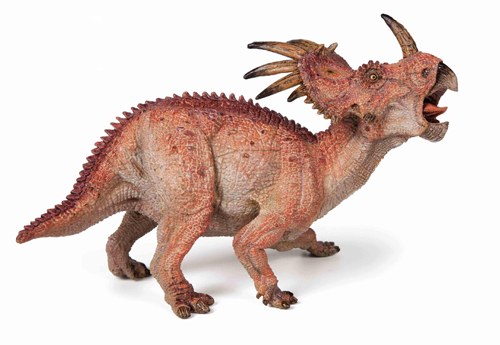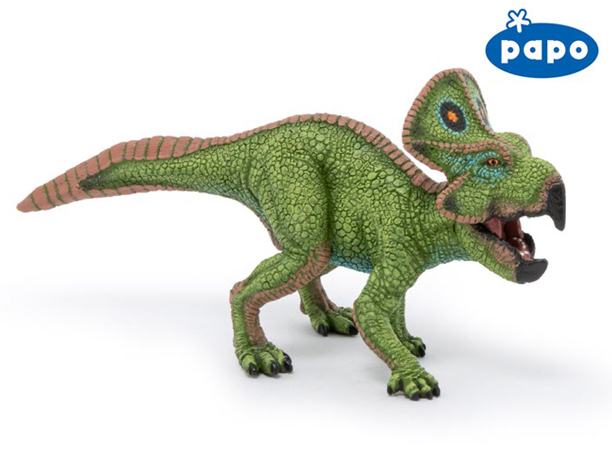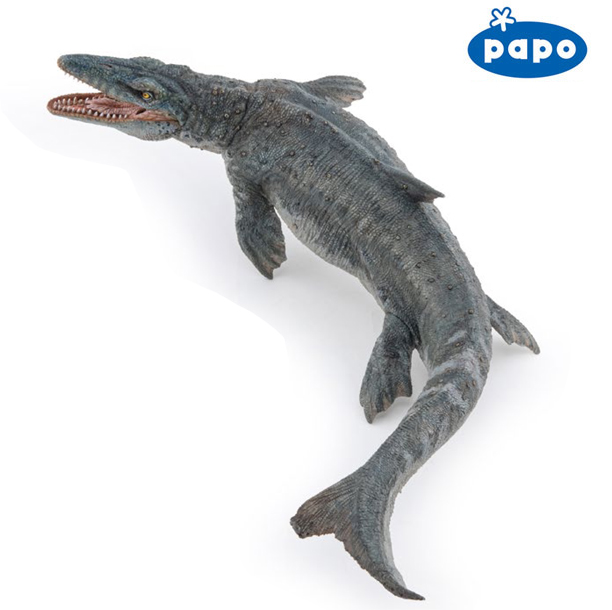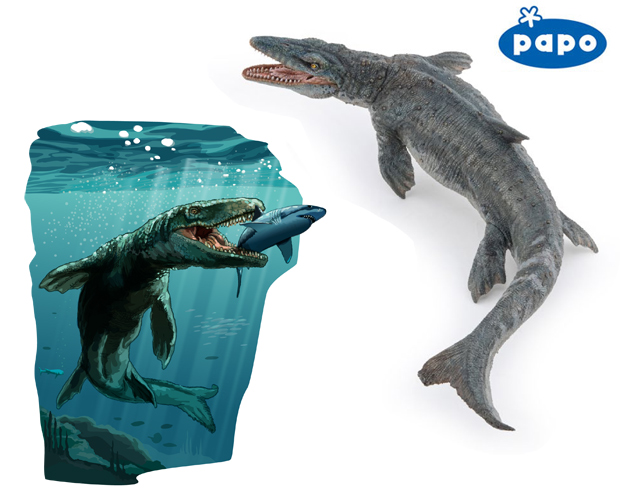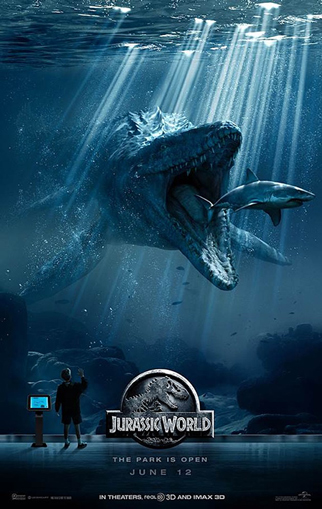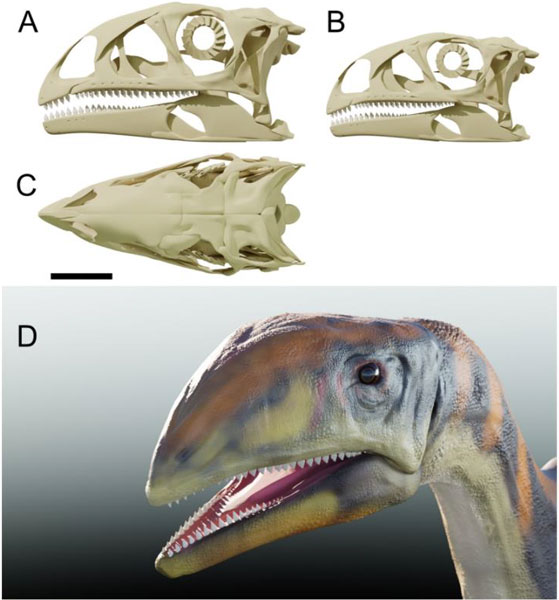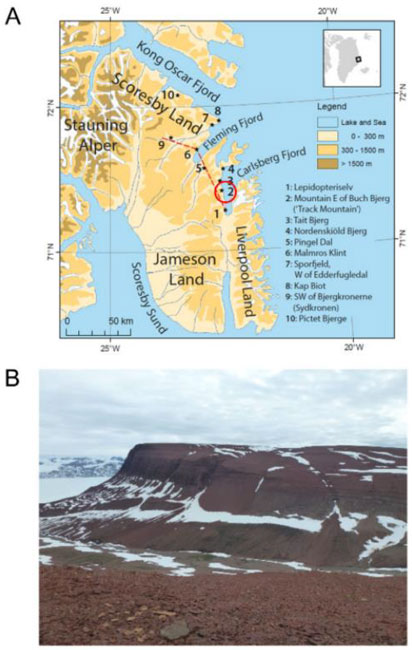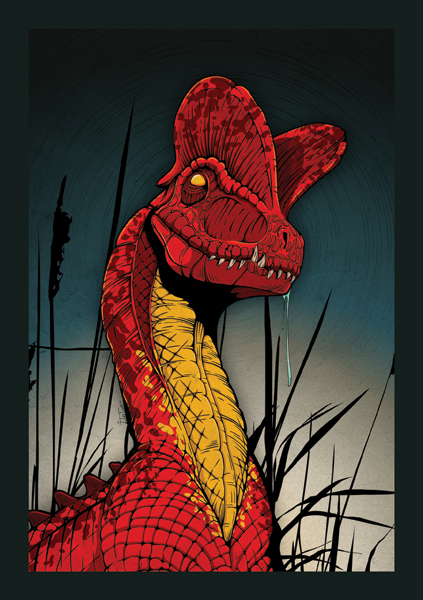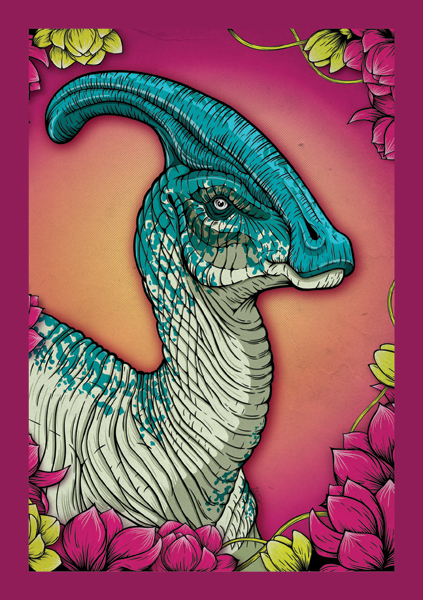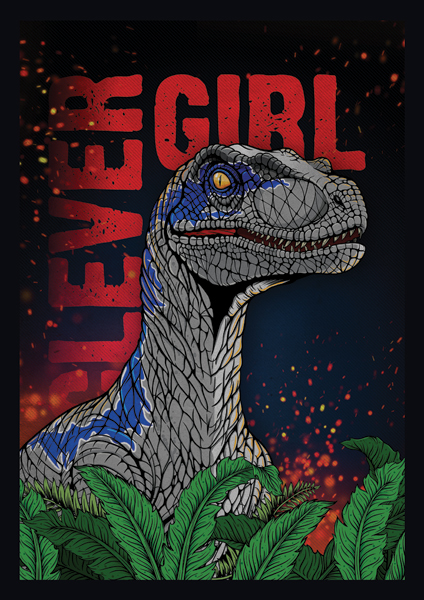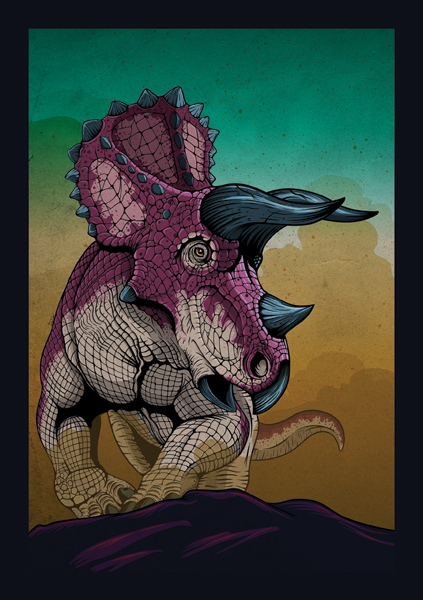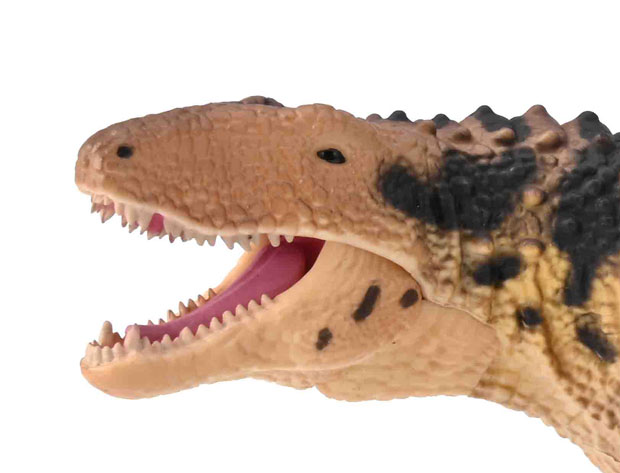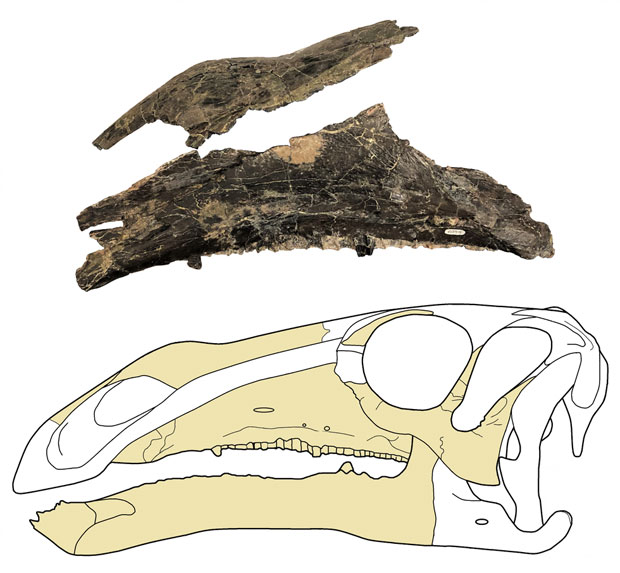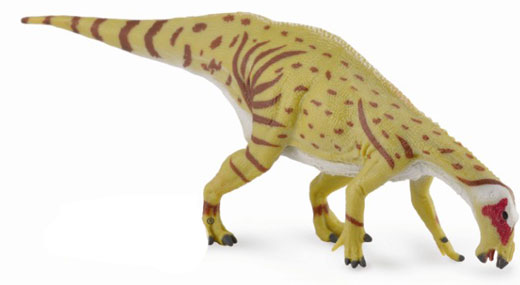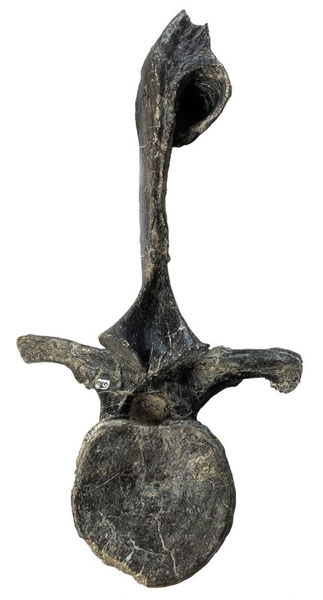Toothless Theropod Dinosaur from Brazil
Scientists writing in the academic journal “Nature” have described a new species of dinosaur. It has been classified as a theropod and a member of the Ceratosauria, however, unlike the vast majority of the Theropoda it had no teeth. The dinosaur has been named Berthasaura leopoldinae and it roamed southern Brazil during the Cretaceous.
This little dinosaur lived in the same oasis environment as the recently described pterosaurs Keresdrakon vilsoni *and Caiuajara dobruskii ** measuring around a metre in length Berthasaura was no giant, but its fossilised remains, which were excavated from an outcrop overlooking a country road (Cruzeiro do Oeste Municipality, Paraná State), represent the most complete non-avian theropod known from the Cretaceous of Brazil.
The discovery of this little theropod dinosaur expands our knowledge of the palaeofauna associated with the Goio Êre Formation. It demonstrates that members of the Ceratosauria were capable of evolving different feeding strategies away from meat-eating. Although the research team cannot confirm the diet of Berthasaura they postulate that it could have been herbivorous or perhaps an omnivore.

A Member of the Ceratosauria
The first ceratosaurs (members of the Ceratosauria clade), probably evolved in the Late Triassic. This diverse theropod clade consists of three families. The Ceratosauridae and the Abelisauridae are mostly made up of mid-sized to large carnivores and they contain well-known dinosaurs such as Ceratosaurus (Ceratosauridae) and Carnotaurus, Rugops and Ekrixinatosaurus (abelisaurids). The third dinosaur family within the Ceratosauria are the poorly known Noasauridae. Noasaurids are generally much smaller and lighter
The largest known noasaurid taxon is Elaphrosaurus bambergi from the Late Jurassic of Tanzania, which may have been around six metres long. These theropods seemed to have occupied a variety of specialist niches in dinosaur-dominated ecosystems. For example, Masiakasaurus (M. knopfleri) from the Late Cretaceous of Madagascar had forward projecting teeth in its lower jaw, a possible adaptation to catching fish. In contrast, fossils of Limusaurus (L. inextricabilis) found in Upper Jurassic strata of north-eastern China, show that whilst juveniles had teeth, by the time these gracile theropods reached about three years of age they had lost all their teeth ***. Palaeontologists have postulated that adult Limusaurus were probably herbivorous whilst juveniles were most likely omnivores.

Taking the Feminine Form for Saurus
The genus name honours Bertha Maria Júlia Lutz, who was a leading activist for women’s rights in Brazil, combined with saura, the feminine form of saurus from the Greek for lizard. The species epithet “leopoldinae” honours the first Brazilian empress, Maria Leopoldina who was instrumental in helping Brazil to become independent.
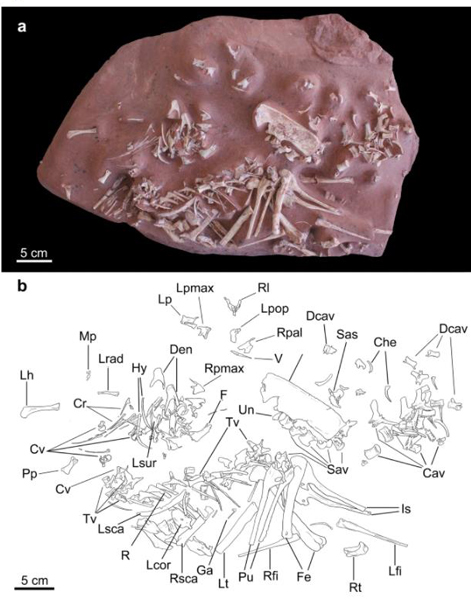
A Juvenile Theropod Dinosaur
Careful analysis of the fossilised bones indicated that the skeleton represents a juvenile. Skull bones and parts of the spine showed signs of not being fused and therefore, the research team, who were led by Geovane Alves de Souza (Universidade Federal do Rio de Janeiro), concluded that Berthasaura, in contrast to Limusaurus, probably did not have any teeth, even as a young animal.
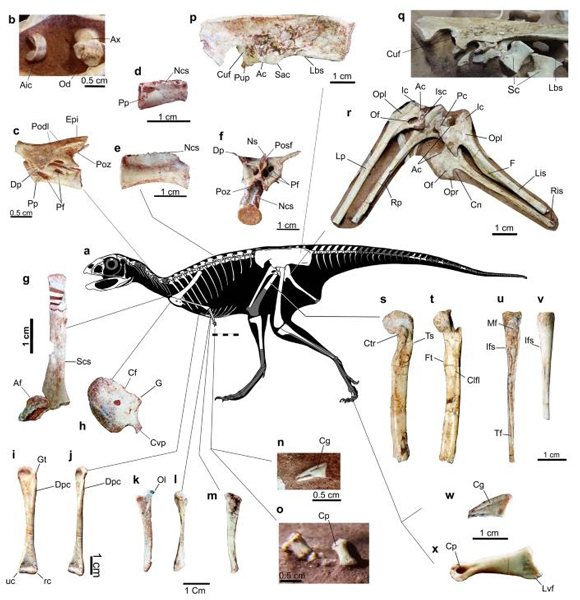
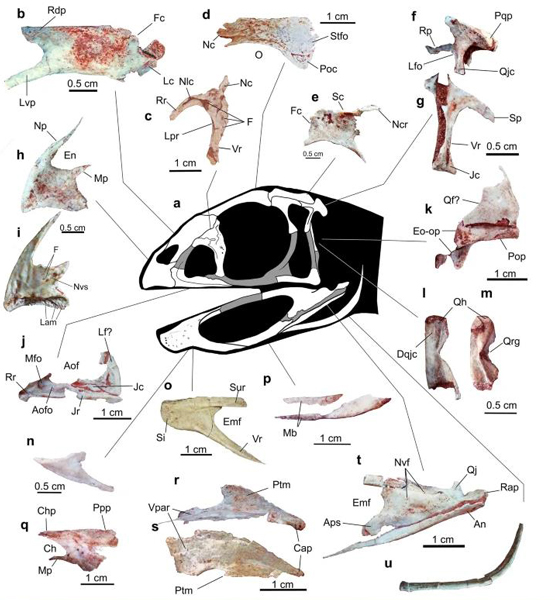
A Basal Member of the Noasauridae
Taxonomic assessment of Berthasaura amongst the Noasauridae and within the wider Ceratosauria proved challenging for the research team. The lack of comparable noasaurid fossils limited the assessment that could be undertaken and it was difficult to conduct a phylogenetic assessment encompassing the Abelisauridae due to difficulties resolving taxonomic relationships between some poorly known abelisaurids. However, the scientists concluded that Berthasaura most likely represents a late, basal member of the Noasauridae and one that was not closely related to Limusaurus.
To read Everything Dinosaur’s blog post about the discovery of Keresdrakon vilsoni * from 2019: New Brazilian Pterosaur Announced.
To read Everything Dinosaur’s blog post about Caiuajara dobruskii ** from 2014: New Species of Flying Reptile Identified from Pterosaur Graveyard.
Research that suggests Limusaurus lost its teeth as it grew up *** from 2016: Limusaurus – Dinosaur Species Lost its Teeth.
The scientific paper: “The first edentulous ceratosaur from South America” by Geovane Alves de Souza, Marina Bento Soares, Luiz Carlos Weinschütz, Everton Wilner, Ricardo Tadeu Lopes, Olga Maria Oliveira de Araújo and Alexander Wilhelm Armin Kellner published in Nature.


